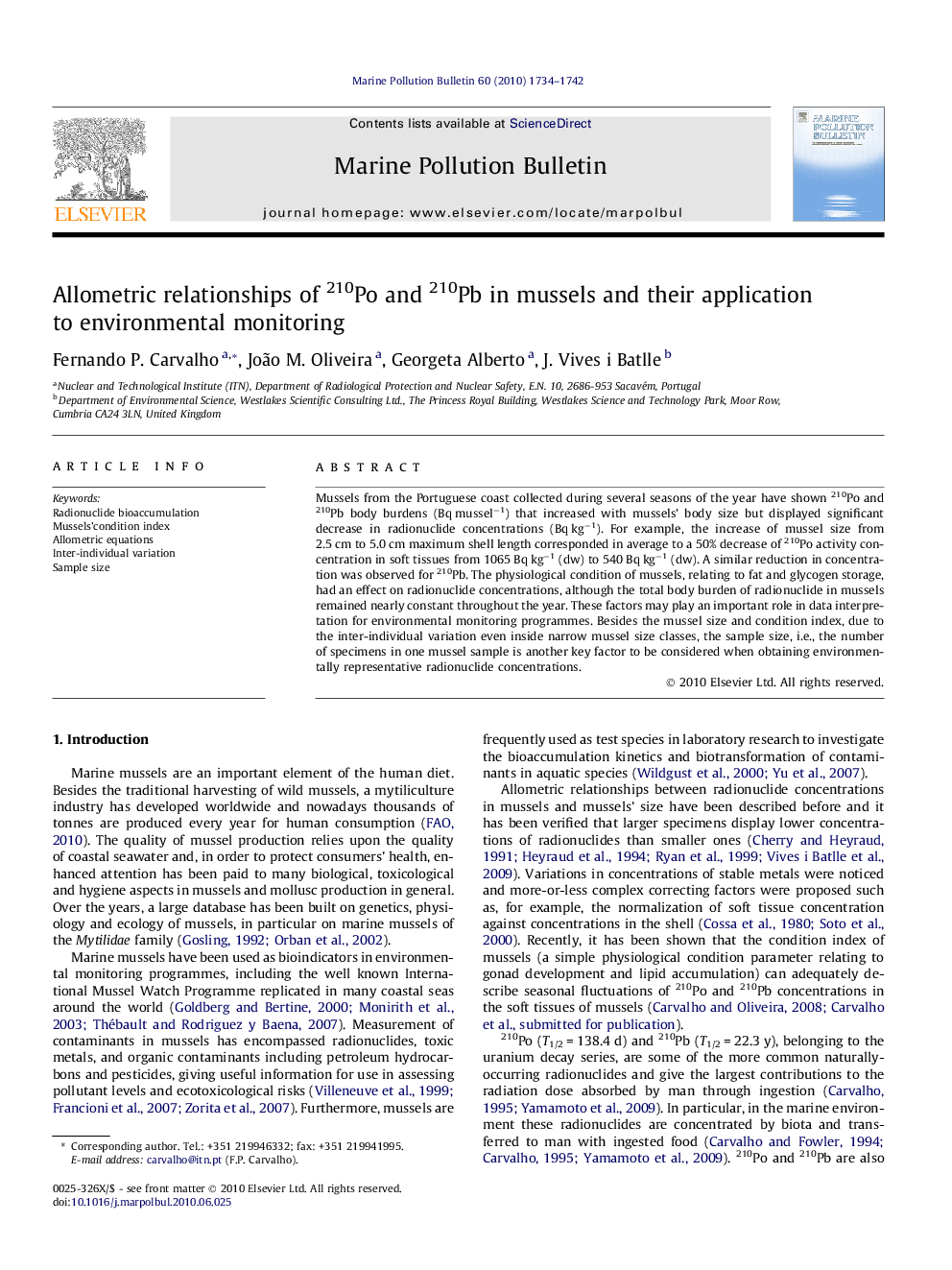| Article ID | Journal | Published Year | Pages | File Type |
|---|---|---|---|---|
| 6362400 | Marine Pollution Bulletin | 2010 | 9 Pages |
Mussels from the Portuguese coast collected during several seasons of the year have shown 210Po and 210Pb body burdens (Bq musselâ1) that increased with mussels' body size but displayed significant decrease in radionuclide concentrations (Bq kgâ1). For example, the increase of mussel size from 2.5 cm to 5.0 cm maximum shell length corresponded in average to a 50% decrease of 210Po activity concentration in soft tissues from 1065 Bq kgâ1 (dw) to 540 Bq kgâ1 (dw). A similar reduction in concentration was observed for 210Pb. The physiological condition of mussels, relating to fat and glycogen storage, had an effect on radionuclide concentrations, although the total body burden of radionuclide in mussels remained nearly constant throughout the year. These factors may play an important role in data interpretation for environmental monitoring programmes. Besides the mussel size and condition index, due to the inter-individual variation even inside narrow mussel size classes, the sample size, i.e., the number of specimens in one mussel sample is another key factor to be considered when obtaining environmentally representative radionuclide concentrations.
